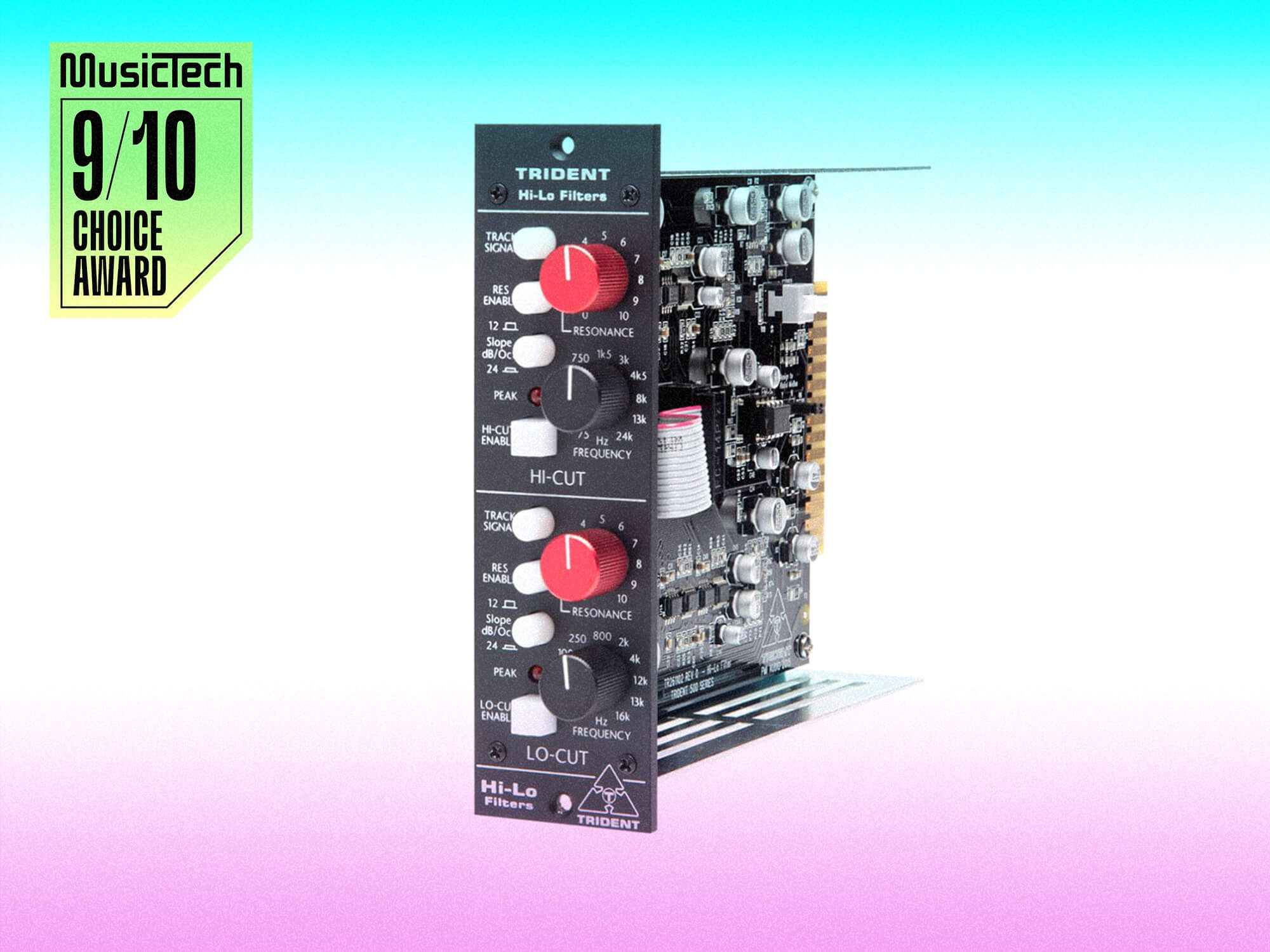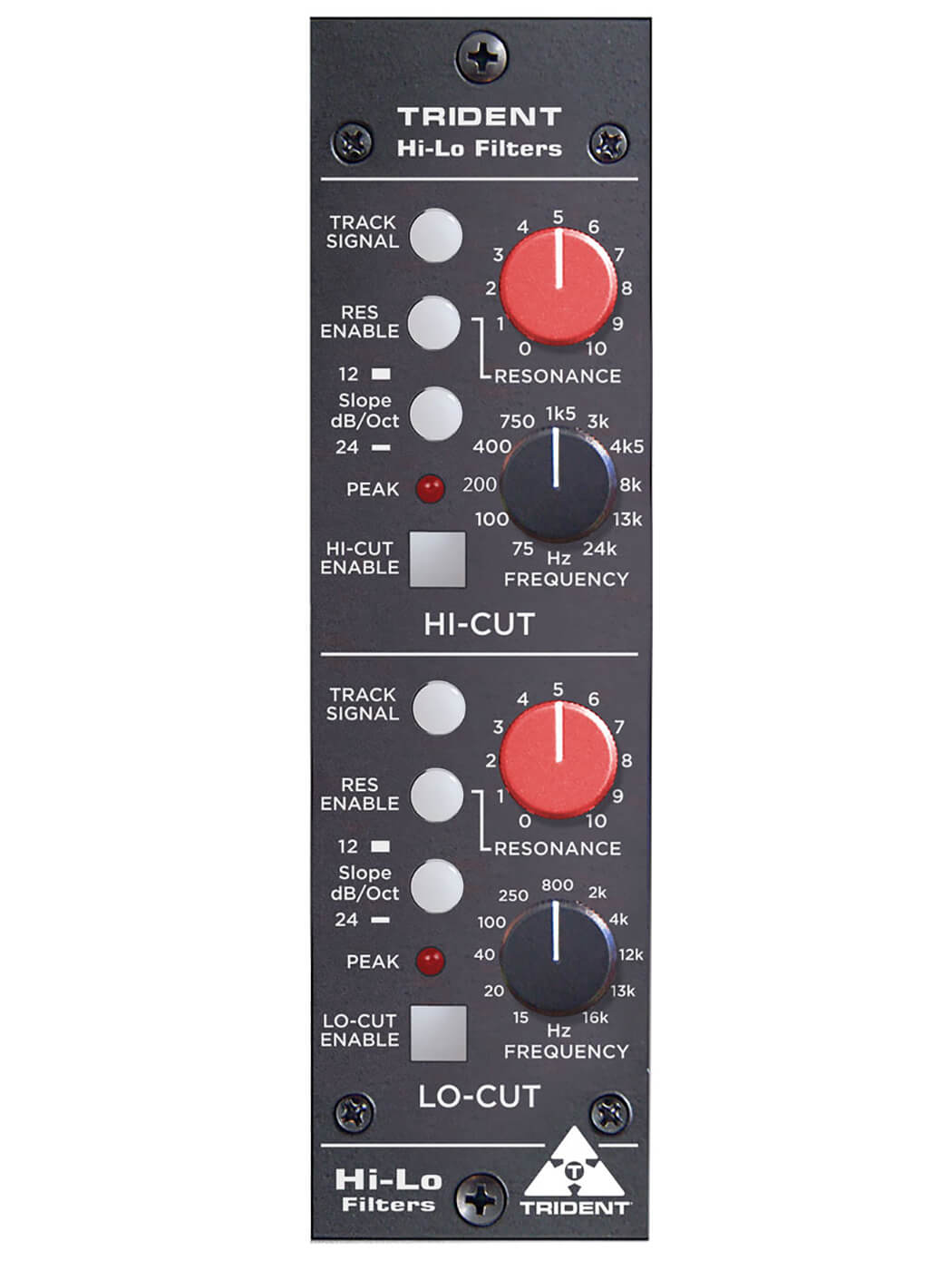Trident Audio Hi-Lo 500 review: a fun EQ and envelope filter that plays well with others
Trident adapts a rare modern classic to produce a 500-series adaptive filter, a tool that promises to be as creative as it is practical.

Review Overview
Our rating
9
Our verdict
⊕ Signal tracking allows noise reduction and envelope filter capabilities
⊕ Plenty of headroom for all those peaks
⊕ Plays well with others – loves EQs, compression and distortion
⊕ Nicely laid out control surface that encourages hands-on filter sweeping
⊖ Stereo linkage is not a front panel option
Price $500
Contact Trident Audio
By reinvigorating a classic design, Trident has produced an innovative, fun, yet professional pairing of dynamic filters. The Hi-Lo effortlessly takes on EQ, noise reduction and envelope filtering roles in a single 500 series enclosure.
The company does this by taking the standard Trident console channel filters, extending their range by 4-5 octaves, adding dual-slope switching, resonance control and dynamic signal tracking, and finally squeezing them into a mono 500 series slot. The layout manages to deliver this wealth of options in a clear and eminently tweakable format. Each filter comprises two potentiometers, four backlit buttons, and a peak level LED with hi-cut above and lo-cut below. With all the buttons engaged, the Hi-Lo takes on a sweetshop vibe – which is entirely appropriate.
At its most sensible and reserved, the Hi-Lo presents a pair of filters to pull back and even trim away (with the 24dB/Oct engaged) any unnecessary high and low-end signal, band-passing the most important audio information. At the other end – where the filter becomes effect – the Hi-Lo behaves as an envelope filter with independent high and lowpass elements.
Rebirth
The Hi-Lo is a rebirth of sorts, bringing back the hi/lo-cut filter section of the CLM DB500 Expounder, a two-channel dynamic equaliser that also featured a 4-band EQ, two bands of which could also track the input envelope.
Although the Hi-Lo is a mono 500 series module, it can be used in stereo pairs by engaging onboard link switches (pre-installation) when they are housed in paired slots. There is also a circuit board level jumper to allow full mixer compatibility with the Radial Workhorse enclosure. You can also use two Hi-Lo modules in series to create 36dB/Oct and 48dB/Oct filters for those who need some serious resonance. This requires matching the frequency controls, which may seem tricky because of their sheer ranges: 75Hz to 24kHz for high-cut and 15Hz to 16kHz for low-cut. In practice, this is not the case. For instance, when used in stereo across a drum mix, it is easy to match settings to keep the image anchored to the centre. Even at extreme settings, a Hi-Lo pair preserves stereo integrity surprisingly well, a mark of design quality.
Smooth headroom
The two Hi-Lo filters make it easy to cut away excesses in static mode, from kick drum sub-bass flab to harsh distortion and cymbal fizzes. Between the two slopes and the massive frequency ranges, there is enormous scope to zoom in on what you need, but adding in the resonance moves this device into a more creative EQ role. At the subtle end, it can add a little presence at the cutoff knee to prevent sources from losing their energy, while towards the end of the dial, you can focus attention on specific aspects, e.g. overblowing a kick drum low boom. There is plenty of headroom available to play hard with sounds, and though it can conjure aggressive sounds, there is still a smoothness and lack of harsh grit to the Hi-Lo sound.
It’s advised that a 4-band EQ be used in series with the Hi-Lo to dig into the Hi-Lo’s capabilities properly, and recreate almost the full Expounder experience. Placing an EQ before the module’s input gives it more to bite on, and again the headroom available makes some rather hefty settings perfectly acceptable. Overcooking the highs or lows into the Hi-Lo allows it to reshape them in a Pultec-like way that everything from drums to lead vocals loves a touch of, especially before compression. The Hi-Lo is a great unit on its own, but as part of a chain, it shines. And then you turn on the tracking.
Get tracking
The tracking function enables each filter to act as non-gating noise reduction. The frequency setting for the filter represents the point to which the cutoff returns as the input signal dies off. Effectively you can tune this to filter out hiss or rumble without eating away at the source while it plays. The envelope of the filters appears to track a wide range of sources without lagging or pinching off too early. With a little care, it can clean up a noisy instrument without becoming audible, though there is a sensible limit to how much can be reduced.
Introducing resonance can help keep the borders of the reduction from being eaten away. Still, there is an inevitable compromise as the cutoff knee peak will soon poke out and draw attention to the action of the filter. You can use this process to expand or highlight a specific attribute, such as the snap of a snare drum, without creating a permanent bump in frequency throughout a track. In conjunction with a static EQ, you can fine-tune this process to even greater effect.
As an overt effect, the Hi-Lo tracking facility takes it well away from noise reduction, often heading into the realm of noise production. Pushing the hi-cut frequency lower and the lo-cut higher – with or without resonance – gives the Hi-Lo a touch of the Mu-Tron III and its many descendants. The envelope is well set and allows the filters to be played without either seeming sluggish or appearing jittery, whether that’s with a live instrument or by tweaking synth VCAs and drum decays. In this mode, there is much fun to be had in switching around the filter slopes, frequency and resonance, maybe leaving one filter off and just messing with the other end of the spectrum.
Tool and toy
The Hi-Lo won’t scream or whine off into self-oscillation, though it will get peaky and pointy when pushed. At the subtle end of its range, between practical tool and creative toy, there is a quality that you can’t get from either envelope filters or EQs, one which allows an aspect of a source to be highlighted in line with how hard it pushes in a mix. It can also focus on what surrounds an instrument, filtering reverb and delay tails or attenuating cymbal decays at the end of a section. Riding the frequency controls by hand is also a deeply satisfying activity, especially as the range of either cut filter will all but silence the input at the end of the dial.
Trident has taken on a much-loved design and successfully transplanted its essence into the format that most suits it flexibility, the 500 series. The controls fill the faceplate but leave enough room to make the Hi-Lo a tactile pleasure as well as an auditory one. The quality and range of the filters and well-appointed control set assure the Hi-Lo a role in any production, from the practical to the creative. It does so at a very affordable price too, which is handy as a pair is more than double the fun.

Key Features
- Hi-Cut Filter: 75Hz to 24kHz, 12dB/Oct and 24dB/Oct
- Lo-Cut Filter: 15Hz to 16kHz, 12dB/Oct and 24dB/Oct
- Input Impedance: 10kΩ
- Max Input/Output: +27dBu
- Distortion (+10dBu out): 0.0031% (20Hz to 20kHz)
- Noise (20Hz to20kHz): -95dBu (no filters in circuit)
- Frequency Response: 16Hz to 60kHz (-3dB)